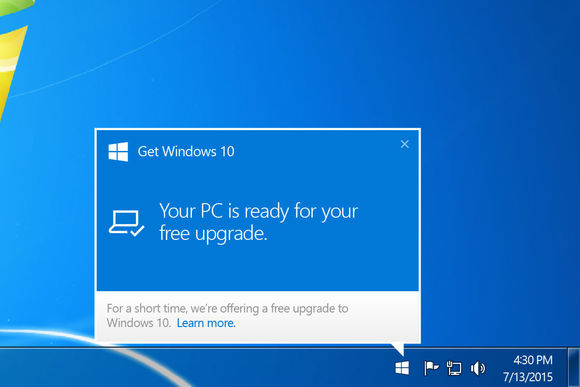Only 10 Days Left to Avail Free Windows 10 Upgrade
Posted by HAAMIZ AHMED
The release of Windows 10 was something that received a mixed response. Some found it cumbersome and buggy (as it indeed was at the beginning) while others liked the new interface and how it blended Windows 8’s metro UI with traditional taskbar-start menu style.
The “Free” Windows
What really caused a buzz among the PC users was that Windows 10 was available for free for Windows 7 and Windows 8 users. They could choose to upgrade from their current Windows to Windows 10 instead of paying a hefty price similar to how each iteration of Windows had a price tag attached to it.
Too Pushy: Microsoft Forces People to Upgrade
In an effort to get more and more users on Windows 10, Microsoft started using underhanded strategies to get people to upgrade to the new Windows. This was met with a severe backlash with people either switching to a non windows operating system or turning off the windows update service itself.
Nobody likes getting things shoved down their throats was the lesson for the Redmond giant.
You can read about it in detail here.
End of the Free Ride
The time span Microsoft gave the users for upgrading to Windows 10 for free was 1 year. Windows 10 launched worldwide on July 29th 2015. After July 29th 2016, Microsoft will charge anyone who wants to upgrade or buy a fresh copy of Windows 10 $120 (~Rs 12,600) for it.
For those of you who haven’t upgraded yet, you have until July 29th to get Windows 10.
Upgrade Procedure
If you happen to have Windows 7 or Windows 8.1 on your PC or laptop, you can upgrade it to Windows 10 via the Get Windows 10 icon on your taskbar.

You can follow the instructions after you click on the icon to download and install windows 10 automatically.
You can also download an image file of Windows 10 from here. The page will walk you through on instructions on how to create installation media for Windows 10 using the image file.
Note that the installation setup of Windows 10 will not require a key from you if your installation of windows is genuine and activated.
The Numbers & What They Mean
Microsoft had set the goal at 1 billion devices running Windows 10 by 2018. That number is still but a dream but they’re getting there slowly.
There are currently 350 million devices running Windows 10 right now.
The amount of devices upgrading to Windows 10 has slowed down quite a bit since its launch at the end of July last year. Microsoft does not think it can reach that number by 2018 anymore, but they are still optimistic that getting to 1 billion devices is still possible.
Personal Experience Matters
People have had varied experiences using Windows 10; the gamers, for instance, had to move to Windows 10 to take advantage of DirectX 12 which is exclusive to Windows 10. The future games will also be developed for DirectX 12 so the gamers had no choice in the matter.
Power users mostly disliked Windows 10 due to its instability during the first few months of its release. Windows 7 provided a much stable platform for their use compared with 10 so they chose not to move. However, that has slowly changed as the new OS became more mature.
What was your experience with Windows 10? Have you made the move to the new windows or are you still satisfied with staying with Windows 7? Sound off in the comments.
The post Only 10 Days Left to Avail Free Windows 10 Upgrade appeared first on .



